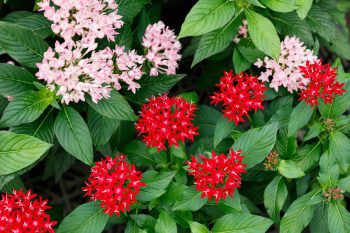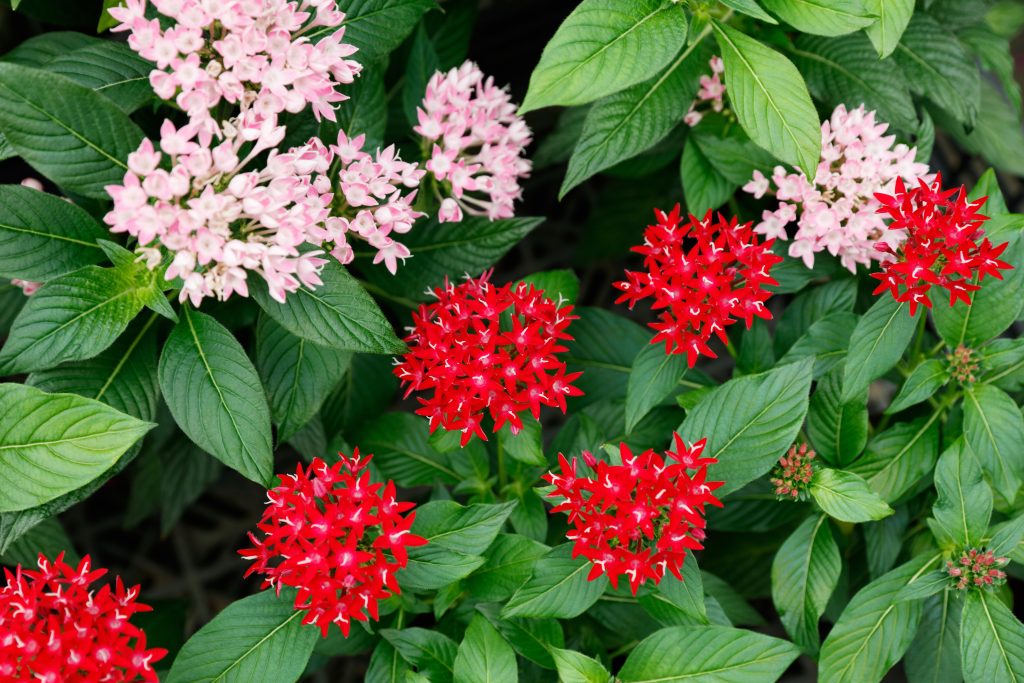 Anyone who is both a garden lover and an animal lover knows the importance of determining which plants may or may not be harmful to pets and children. So how do you know whether Pentas flowers are or aren’t safe for you and yours?
Anyone who is both a garden lover and an animal lover knows the importance of determining which plants may or may not be harmful to pets and children. So how do you know whether Pentas flowers are or aren’t safe for you and yours?
The tricky thing is that all plants have at least 2 recognized names, including their scientific name plus however many common names they also go by.
For instance, Pentas flowers are also known as Egyptian Stars, star flowers, or star clusters. Their scientific name is Pentas Lanceolata.
It’s easy to see how this important to know, so that you can avail yourself to all possible information about the plant you’re researching. Consider this: the ASPCA website has an exhaustive list of over 300 plants, separated into “toxic” and “non-toxic” categories.
The terms “Pentas” and “Egyptian Star” were nowhere to be found! Thank goodness I knew to look for the scientific name as well.
And the good news? Pentas flowers are non-toxic to dogs, cats, and humans!
However, there are a few things to keep in mind when making this determination about a given plant. Here are a few pointers:
Plant Parts
There are many plants, even some common food items, that have edible fruits, petals, and/or foliage, but may have stems, seeds, or roots that are toxic. Any combination of these parts, regarding their toxicity, may look different from one plant to the next.
Coriander and cilantro are a common example of this situation, when it comes to edible plants. Some people are allergic to a chemical found in the plant’s foliage (cilantro), but have no problem with coriander (the spice made from the plant’s seeds).
In a moment we’ll take a more detailed look at how this variable influences the determination of a plant’s toxicity if ingested by a dog or cat.
Chemistry
The reason it’s important to consider a plant’s different parts is because they have slightly different chemical compounds. That, for instance, is why some people can eat coriander but not cilantro.
Likewise, this is good to keep in mind simply from a culinary perspective. Some flowers have petals or leaves that make a lovely tea, but would not taste good in your salad. Similarly, there are plenty of root vegetables (carrots, potatoes, turnips, etc.) whose roots are delicious but their foliage is bitter and pungent.
When it comes to a curious dog, they aren’t going to consider these things. If it smells good, there’s a chance they may take a taste-test. And even if only one component of the plant is toxic, doing so places their health at risk.
Classification: Toxic, Non-Toxic, Not Meant for Consumption, Edible
So what exactly is the difference between all these classifications? And is there some overlap between them?
Clearly, “toxic” and “edible” are very different qualities! And for the sake of this topic, it is safe to say that “non-toxic” and “not meant for consumption” are essentially the same.
Allow me to illustrate with a relatable analogy:
You may recall, from your childhood, that tempting saltiness of Play-Doh and then noticing the container said “non-toxic.” That label can be found on myriad other products, such as crayons, glues, and scented markers.
But that doesn’t mean those things are food! Pentas flowers are a good example of that as well. Incidental ingestion has been deemed basically harmless. But as with any plant that isn’t specifically considered edible, excessive consumption can cause digestive problems.
When a botanist, chemist, or a large company like the ASPCA class something as toxic to an animal, they have generally taken into consideration the entire plant.
Again, this is because curious pets (or curious toddlers) are not going to make that discernment for themselves. So it is much safer to label the entire plant as toxic, even if that is only true about one or two parts of the plant, just to be safe.
Visit our Garden Landscaping service page to learn more about how Ryno Lawn Care can keep your yard beautiful.
Additional Info About Pentas Flowers
Pentas is a “bushy” plant that produces round clusters of tiny star-shaped flowers. The coloring range includes various shades of red, pink, white, and purple.
The term “penta” actually means “five,” which is where this five-petalled starling gets its name. She prefers warm climates, but can easily be cultivated in agricultural zone 8 as well (North Texas).
Pentas flowers offer a lengthy blooming season from mid-spring to mid-autumn. They need as much sunlight as possible, with soil that is both moist and well-drained.
If you aren’t sure how to guarantee a plot of well-drained soil for your flower garden, read more about How to Deal with Drainage Problems in the Garden.
They can be cultivated either from seeds or from cuttings, either inside or out. However, if you choose to use seeds, you may want to start out in a container or a protected portion of your yard. This is because the seeds need direct light in order to germinate.
Be sure you check the pH of your soil, regardless of where you are planting Pentas, as the do best between 5.5-7.5. Additionally, Pentas flowers that are grown outside will need occasional pruning to avoid overgrowth.
If you choose to add these delicate beauties to your landscape, take comfort in knowing they are perfectly harmless to your four-legged family members.





